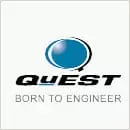A recent prediction by Gartner states that by 2019, Augmented Reality (AR), Virtual Reality (VR) and Mixed Reality (MR) technologies will be evaluated and adopted by 20% of large enterprises across industries worldwide.
In less than one year from now, global businesses could be unleashing AR-driven experiences in the mainstream channel – be it for product displays, workforce training, consumer self-service applications or equipment maintenance.
As a disruptive technology, augmented reality (AR) is no more limited to research papers. It has become the relentless call of the day that revolutionizes existing business models, manufacturing processes and marketing strategies. AR is no more an option to overlook. So, precisely what does AR mean? And, why it is significant that businesses must align themselves to this technology.
In simple words, AR takes an existing piece of data and adds or augments it. AR is a live, direct or indirect view of a physical, real-world environment whose elements are augmented (or supplemented) by computer-generated sensory output such as sound, video, graphics or GPS data. More and more industries embrace the real world traits in a virtual mode to increase productivity, slash time to market, and enhance overall bottom-line.
VR fully immerses the user in an artificial digital environment. Transporting the user to a completely different world, VR glasses or headsets such as Oculus Rift, Samsung Gear VR or Google Cardboard have already created a loud cry among users. While many virtual reality companies are devising virtual reality apps and systems for enterprise usage, it’s the virtual reality games that brought the focus on the technology.
MR however is a technology that combines real and virtual worlds to produce new environments and visualizations where physical and digital objects co-exist and interact in real time.
According to a forecast by Digi-Capital, VR’s market potential has diminished by the emergence of mobile AR as a rival platform. The report also states that since the last quarter of 2017, there has been a significant shift from VR-driven investments to the new mobile AR market. A lot of this shift can be accredited to the success of AR games like Pokemon Go, which grossed a total revenue of $1.8 billion and became the fastest game ever to reach this milestone.
With unprecedented experiences and shifting the way people explore, play, work, communicate or thrive, AR revolutionizes industries as well as enterprises and offers increased efficiency, improved safety and enhanced productivity.
To sum up, AR is capable of providing industrial and manufacturing units with real-time plant/factory diagnostics as well empowering healthcare providers with superior and detailed visualization for better cure provisioning.
The inherent ability of AR to bridge online and offline experiences and allow users to personalise experiences without changing the physical environment will make it the primary driver for its mass adoption across industries including manufacturing, mining, construction, aerospace and defence, marketing, industrial training and maintenance, education, healthcare, art, fashion and entertainment.
According to Statista, revenue from AR app development is expected to be three times as high as that of VR by 2020. Thus, for companies the obvious next step is to build a comprehensive AR strategy to ensure that their business continues to grow and stay relevant.
When we talk about how AR is eventually going to affect the way enterprises do business, there are three major areas that get impacted and AR helps cover Maintenance, Training and Operations for Aerospace, Aero engines, Manufacturing, Healthcare, Heavy Industries, Consumer Goods, Oil & Gas and more.
Owing to the high complexity in design and intricate parts, technicians and engineers, dealing with heavy machinery and equipment, rely on tedious manuals and guides to locate and fix exact errors. This causes huge delay leading to spiralling costs, lower productivity and loss of revenue. Solutions like QuEST AR360 enable clients to resolve these problems by avoiding machine downtimes or delay in repair.
Enterprises often face a challenge in creating an immersive training experience of complex parts of the machineries. Allowing enterprises to reinvent training content into 2D or 3D modules to help technicians learn how to trouble shoot complex issues, QuEST AR360 helps significantly reduce time, effort and money on training and practice. Some assured benefits include better classroom training experience, zero dependency on field machines and self-help digital material for reference.
Helping with core industry operations, AR makes it easy to find a balance between user manuals and machineries, making it easy for the field engineers to carry out complex machine operations without hassle.
With easier integration with smartglasses, HMTs and other AR-driven headsets for hands-free and uninterrupted support for heavy machineries, AR360 offers
QuEST Global is one of the early solution providers in the AR/VR domain. QuEST AR360 helps companies develop, deploy and manage AR apps for any industry from a single platform.
QuEST AR360 offers distinct features and abilities for the device users as well as for the web-based content managers.
As enterprises move towards AR incorporation to their augment production and marketing processes, QuEST AR360 helps boost revenue significantly. QuEST offers cutting edge digital transformation services enabling enterprises to stay ahead in the business by optimizing processes and technologies to meet growing enterprise needs.
